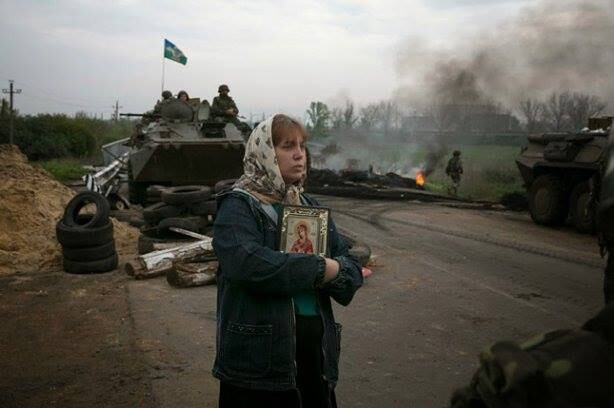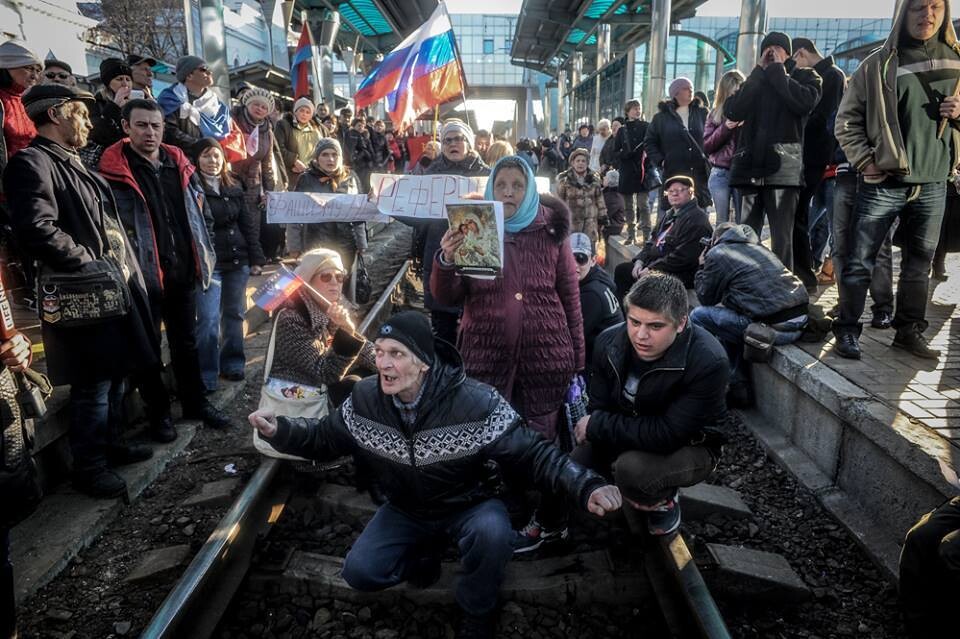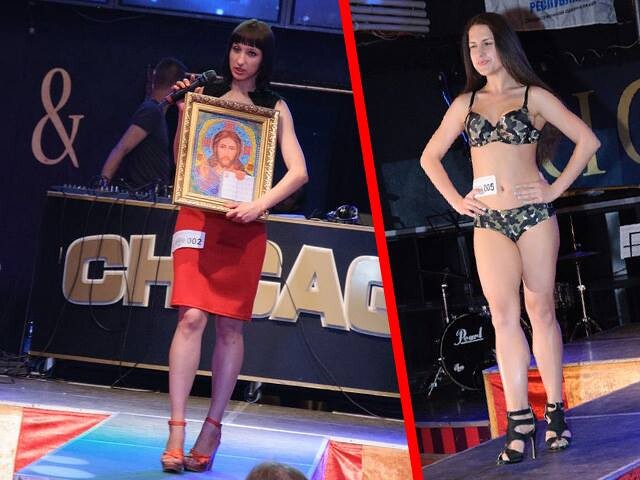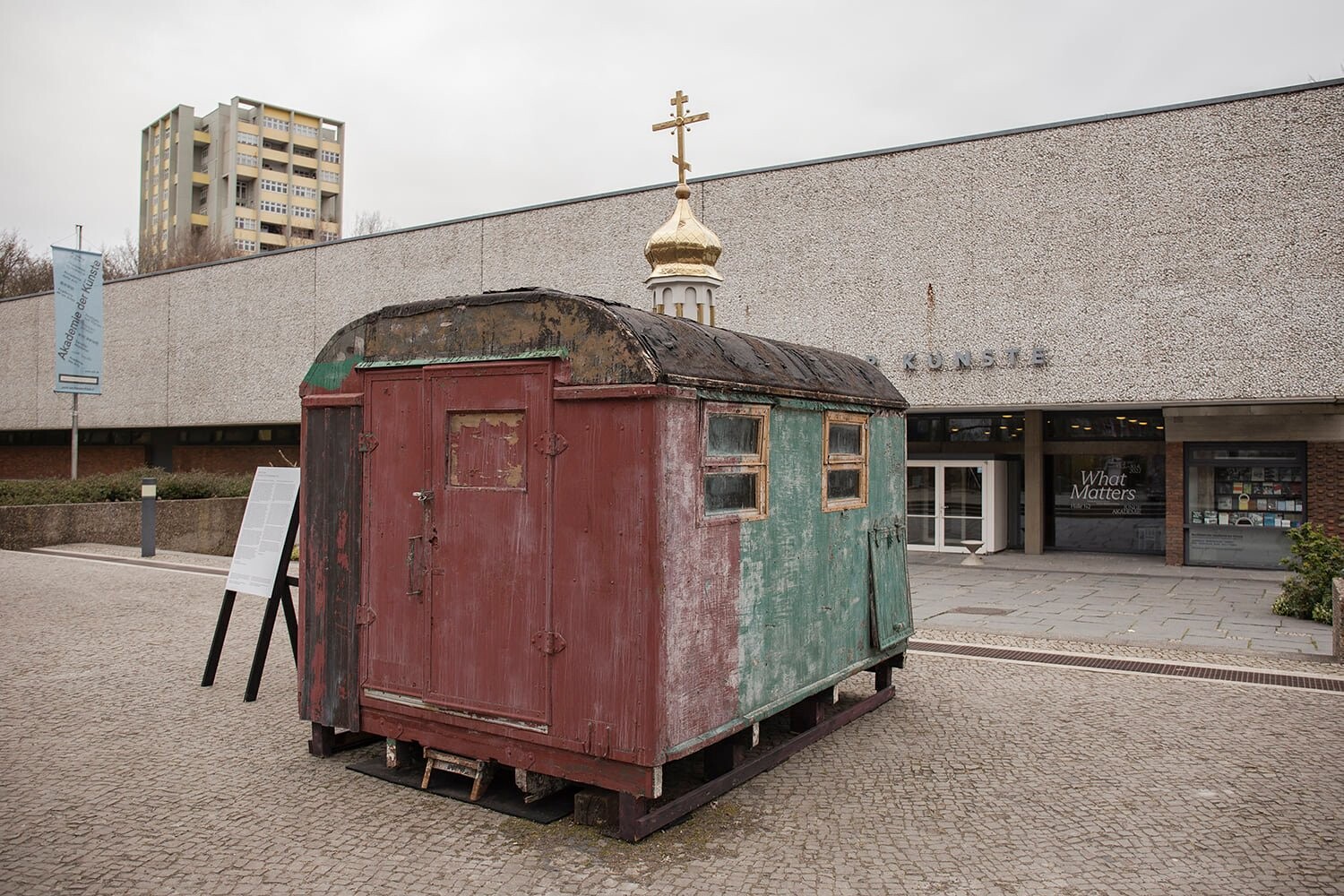One of the outstanding shots in Dziga Vertov’s Enthusiasm (The Symphony of Donbas) (1931) is the collapse of a church on the site of which a youth club is being built. Religion falls, society’s faith is directed at itself, ideology, and the state. There are no more commandments. God is replaced by A Murderer. He kills peasants and cultural figures, seeks out enemies of the people where there are no enemies, deports the population to other lands, leaving them homeless and rootless.
Sergei Parajanov’s film Shadows of Forgotten Ancestors (1965) is based on the work of Mykhailo Kotsyubynskyi.1 Parajanov was drawn to the mysticism of the Hutsuls, and was inspired by their belief system and their faith. Most of the filming for Shadows of Forgotten Ancestors took place in the natural landscapes of the Carpathian Mountains, but some of it also took place at the Dovzhenko Film Studio in Ukraine—for example, the scene where Ivan and Marichka get married. For this scene, Parajanov took the iconostasis from the church of St. Paraskeva, saving it, as it turned out, from a 1982 fire.
Many people in Ukraine, primarily cultural workers, were inspired by Vertov’s film; they also looked at the smiling faces in Parajanov’s film and felt hope, love, and devotion. Generations believed in a bright future and in the power of culture. Unfortunately, however, in Ukraine our common future has been stolen several times: in 1932,2 1937,3 the 1940s,4 the 1960s,5 and 1986.6 In 2014, our future again came under attack.7 And since February 24, 2022, we have seen the fiercest battle for it yet.
Almost a century has passed since Vertov’s film was made. It’s a good starting point for a discussion about decolonization because it was created at a Ukrainian film studio in Kharkiv (Ukrainfilm), completely independent from Moscow. Vertov’s avant-garde works have never been “Russian,” and he has never represented Russia as such. The same applies to Parajanov, an artist and director of Armenian-Georgian descent who continued the tradition of poetic cinema in the 1960s. However, then as now, Moscow lowly and cruelly takes someone, appropriating or destroying him. Today, another executioner has come from Russia. He has enlisted the church’s support, disguising his hatred of religious dogma. Together they are destroying arts and culture to make way for orthodoxy.
But faith or belief is not confined to the church. And the church is not only about faith, trust, and culture. It is also a political and ideological influence on its parishioners, as well as a business aimed at enriching the priests themselves. Although the Ukrainian constitution enshrines the separation of church and state, this rule has been violated by multiple presidential administrations. In particular, under fugitive ex-president Viktor Yanukovych the church exerted influence on political decisions. The church also meddled in politics during the Maidan uprising of 2014.
The Ukrainian Orthodox Church of the Moscow Patriarchate (UOC-MP) played a role in organizing separatist sentiment in Donetsk and Luhansk in the spring of 2014. Several people carrying religious icons came out to support the separatist forces.


Donetsk region, 2014. Photographer unknown.


Donetsk region, 2014. Photographer unknown.
The images of these marginal people with icons circulated in international newspapers. Thus the predominantly atheist Donetsk was presented as being part of Russian culture. Even more paradoxical is the church’s involvement in beauty contests, just one of the many “peaceful” initiatives it supports. At one beauty contest, participants displayed their favorite icons and later came out in bathing suits.


Donetsk, 2015. Photographer unknown.
Since 2014, UOC-MP representatives have repeatedly promoted Kremlin ideas in their sermons. Now this support for the Kremlin translates into support for war and the destruction of civilian infrastructure. Leaders of the UOC-MP openly support violence (for example, by putting swastika stickers on their cars) and help supply weapons to Russian forces (UOC-MP churches in the Lviv region were found to be storing weapons for the Russian military). They work directly with Russian intelligence services and are funded by Moscow, as was the case with Kirill Frolov in Odesa, leader of the Association of Orthodox Experts. They have taken priests from the Ukrainian Orthodox Church hostage, like Vasyl Vyrozub, who went to Zmiinyi Island to pick up the bodies of deceased Ukrainian border guards, only to be imprisoned. As it turned out later, border guards were also taken prisoner.
In early March, Ukrainian artist Sasha Kurmaz’s installation The Temple of the Transfiguration was featured in the exhibition “What Matters” at Akademie der Künste in Berlin. To make the work, Kurmaz took the cab of an old Soviet military vehicle and put a church spire on top. Violence and mass killings are disguised by the holy face of the church. But look at the shabby walls of the temple—the old iron structure has rusted over time:
In 1991, Russia declared itself the successor to the USSR, saying it took responsibility for all of its historical crimes. But this did not last. Instead, Moscow just built a new prison, one that excludes all democratic norms.
Eight years have passed since Russian soldiers entered Eastern Ukraine with weapons. Two months have passed since Russia’s full-scale military invasion. The cab of the old Soviet military vehicle is increasingly covered in rust—these processes are inevitable. It is no longer God but nature that digests violence, turning it into scrap metal.
They said: if we strike you on one cheek, we will eventually strike you on the other too.
We were struck in 2014. But in 2022 we are ready to fight back. This can clearly been seen in the footage of Ukrainians coming out to stop tanks with nothing but their bodies.
We are different.
They said: we are brothers. But we know that Cain killed Abel.
We are not brothers to our killers. The only noble form for our society is sisterhood, built on solidarity, empathy, and mutual respect, which we have clearly seen during the full-scale invasion.
We are different.
Today our religion and faith are the people. Ukraine is a country where people of different faiths live—Christians, Muslims, Jews, agnostics, and atheists. No faith can justify the violence that the Russian government and the Russian church are committing in Ukraine today. The actions of the Orthodox Church of the Moscow Patriarchate are unjustifiable. And when the empire falls, its satellites will fall too. Then faith will be given back to the people, and they can choose their own gods, even if this God is a Hutsul mavka,8 a Konotop witch,9 or an ordinary human being who gives his bulletproof vest to a child.
Sergei Parajanov was not only repressed by Soviet authorities, but was also convicted of promoting same-sex relations. He spent four years in prison in the Donetsk region but was released due to intense pressure from the cultural community.
In 1932–33, the Soviet government organized a mass famine in Ukraine, which came to be known as “Holodomor” (“to kill by starvation”). Grain was exported from Ukraine or burned in front of starving peasants and townspeople.
In 1937, the Ukrainian intelligentsia suffered a series of mass repressions and executions. The events came to be known as “The Shooting of the Renaissance.”
Ukraine was drawn into World War II in 1939 with the occupation of Lviv. WWII was a very traumatic period for the country, involving horrific violence, including collective executions. In addition, the first wave of the deportations of Crimean Tatars took place in 1944.
In the 1960s and ’70s, a dissident movement developed in Ukraine, but Ukrainian art also endured severe repression and censorship.
April 26, 1986 was the date of the Chernobyl disaster.
In the spring of 2014, Russia annexed Crimea and occupied certain parts of the Donetsk and Luhansk regions.
As in certain folk beliefs of Western Ukraine.
As in an 1833 satirical novel by Ukrainian writer Hryhoriy Kvitka-Osnovyanenko.

